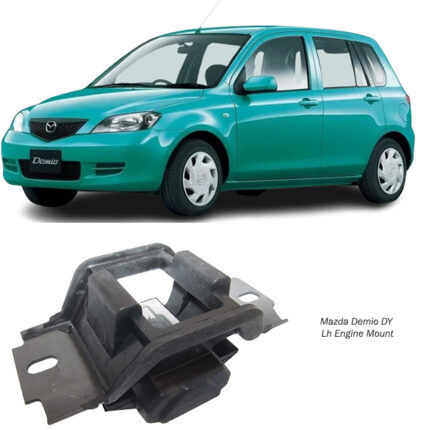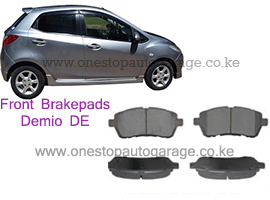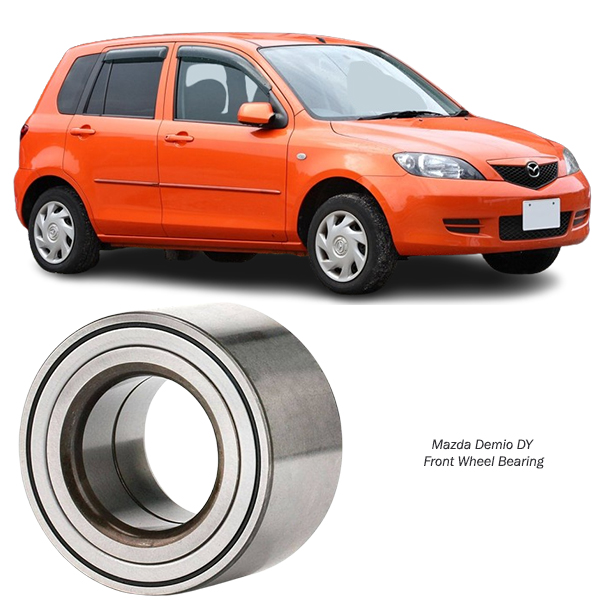-11%
Get Mazda Demio DY Front Wheel Bearing DAC39720037M in Kenya
Front wheel bearings are essential components in a vehicle’s suspension and steering systems, playing a crucial role in supporting the vehicle’s weight, enabling wheel rotation, and ensuring smooth and stable movement. Properly functioning wheel bearings contribute to a comfortable ride, precise steering control, and reduced wear on other components. Let’s take an in-depth look at the purpose, construction, types, signs of wear, causes of failure, maintenance, and replacement of front wheel bearings.
1. Purpose and Function of Front Wheel Bearings
Front wheel bearings are designed to reduce friction and support the weight of the vehicle while allowing the wheels to rotate freely. Each bearing serves as the primary contact between the wheel and the axle, enabling smooth, low-friction movement that is essential for handling, steering, and vehicle stability. Key functions of front wheel bearings include:
- Reducing Friction: Wheel bearings minimize friction between the wheel and axle, allowing the wheels to spin smoothly and efficiently.
- Supporting Weight: The bearings help support the vehicle’s weight by distributing the load evenly, which is especially important during braking, acceleration, and cornering.
- Ensuring Wheel Alignment: Bearings help keep the wheels aligned with the axle, reducing vibrations and ensuring consistent handling.
- Enhancing Safety: Properly functioning wheel bearings maintain secure wheel alignment, which is critical for safe driving. They help prevent issues such as wheel wobbling, which could cause accidents.
2. Types of Front Wheel Bearings
Front wheel bearings come in various types, each with unique design features and intended applications:
- Ball Bearings: One of the most common types, ball bearings consist of spherical balls housed within an inner and outer race. They are suitable for both radial (horizontal) and axial (vertical) loads, making them versatile for most vehicle applications.
- Roller Bearings: Roller bearings use cylindrical rollers rather than balls, allowing them to handle higher loads than ball bearings. However, they are primarily designed for radial loads and are less effective with axial loads.
- Tapered Roller Bearings: These bearings have a conical design that supports both radial and axial loads, making them ideal for front wheel applications. Tapered roller bearings are commonly found in heavier vehicles, as they are durable and capable of handling the stress from turns and uneven road surfaces.
- Hub Bearings: These are integrated into a single hub assembly and are non-serviceable, meaning that the entire hub assembly must be replaced if the bearing wears out. Hub bearings are sealed to prevent contamination and improve longevity.
The type of bearing used depends on the vehicle’s design, weight, and intended use. While passenger cars may use ball or roller bearings, larger vehicles often rely on tapered roller or hub bearings for added durability.
3. Construction and Components of Front Wheel Bearings
A typical wheel bearing consists of several main components:
- Inner and Outer Races: These are the bearing’s inner and outer surfaces. The inner race attaches to the axle or spindle, while the outer race fits into the hub. These races form the path along which the ball or roller elements move.
- Rolling Elements: The balls or rollers that enable smooth rotation and reduce friction within the bearing. These elements are critical for the bearing’s performance and longevity.
- Cage: A structure that keeps the rolling elements evenly spaced within the bearing, allowing them to roll freely without contacting each other.
- Seals: Bearings are typically sealed to protect against dirt, moisture, and other contaminants. Sealed bearings are pre-lubricated and require no additional maintenance.
The assembly’s design ensures that the bearing can withstand the forces exerted during driving, including impacts from uneven surfaces, while also providing a low-friction interface that minimizes wear.
4. Symptoms of Worn or Failing Front Wheel Bearings
Over time, front wheel bearings can wear out or fail due to various factors, leading to symptoms that affect vehicle performance and safety:
- Noise: One of the most common signs of a failing wheel bearing is a grinding, humming, or growling noise coming from the wheel area, which typically becomes more pronounced during turns or acceleration.
- Steering Wheel Vibration: If a wheel bearing is worn, it can cause vibrations in the steering wheel, especially at higher speeds.
- Uneven Tire Wear: Failing bearings can lead to wheel misalignment, causing uneven tire wear and potentially reducing tire lifespan.
- Loose Steering: Damaged bearings can cause excessive play in the steering, making the vehicle feel loose or difficult to control.
- ABS Warning Light: Many modern vehicles have wheel speed sensors integrated into the bearing assembly. A malfunctioning bearing can trigger the ABS (Anti-lock Braking System) warning light due to inconsistent speed readings.
If any of these symptoms are observed, it’s essential to have the wheel bearings inspected and, if necessary, replaced to avoid further damage and maintain safety.
5. Causes of Front Wheel Bearing Wear and Failure
Several factors can contribute to premature wheel bearing wear or failure:
- Harsh Driving Conditions: Driving over rough terrain, potholes, or poorly maintained roads can place excessive strain on wheel bearings, causing them to wear out faster.
- Improper Installation: Incorrect installation, such as over-tightening or under-tightening the bearing, can damage it. Bearings also need proper alignment and installation torque to function correctly.
- Contamination: Dirt, moisture, and debris entering the bearing can disrupt lubrication and accelerate wear. Contamination is especially common in unsealed bearings, though sealed bearings can still be vulnerable if the seal fails.
- Excessive Loads: Carrying heavy loads or towing beyond the vehicle’s capacity can put additional stress on the bearings, leading to early failure.
- Low-Quality Bearings: Bearings of inferior quality may not meet performance standards, leading to shorter lifespans.
6. Maintenance Tips for Front Wheel Bearings
Though wheel bearings are typically low-maintenance parts, following these practices can help extend their lifespan and improve performance:
- Inspect Regularly: Periodically check for signs of wear, such as unusual noises, vibrations, or uneven tire wear. Regular inspection can help identify potential issues before they worsen.
- Avoid Overloading: Stick to the vehicle’s load limits to avoid placing excessive stress on the bearings.
- Drive Smoothly: Avoid hitting potholes or rough patches at high speeds, as this can impact the bearings’ integrity.
- Keep Bearings Sealed: If your vehicle uses sealed bearings, ensure the seals are intact and functioning. Damaged seals can let contaminants enter, leading to premature wear.
7. Replacement Process for Front Wheel Bearings
Replacing front wheel bearings can be complex and typically requires specialized tools and mechanical expertise. Here’s an overview of the replacement process:
- Lift and Secure the Vehicle: Lift the vehicle and secure it to allow safe access to the wheel assembly.
- Remove the Wheel and Brake Components: The wheel and brake caliper are removed to access the hub assembly and bearing.
- Detach the Hub Assembly: The hub is disconnected from the axle, often using a bearing puller. For integrated hub assemblies, the entire unit is replaced.
- Install the New Bearing: The new bearing is fitted to the hub, and proper torque specifications are followed to ensure a secure fit.
- Reassemble and Test: The brake and wheel components are reassembled, and a test drive ensures everything functions correctly.
8. Choosing the Right Front Wheel Bearing
Selecting the correct bearing is crucial for durability and compatibility with your vehicle:
- OEM Standards: Opt for bearings that meet or exceed Original Equipment Manufacturer (OEM) standards for reliability.
- Compatibility: Ensure the bearing is compatible with your vehicle’s make, model, and year.
- Quality: High-quality materials and sealed designs are preferred for longevity and performance.
9. Cost Considerations and Longevity
The cost of front wheel bearing replacement varies based on vehicle type, bearing quality, and labor rates. Wheel bearings generally last between 85,000 and 100,000 miles, though this can vary depending on driving conditions and maintenance practices. High-quality bearings, correct installation, and regular inspections can contribute to a longer bearing lifespan.
10. Conclusion
Front wheel bearings are essential to a vehicle’s performance, stability, and safety. These components facilitate smooth rotation, reduce friction, and help maintain wheel alignment. Recognizing the symptoms of wear, understanding causes of failure, and following preventive maintenance practices are crucial for prolonging their lifespan. When the time for replacement arrives, choosing quality bearings and professional installation ensures continued safe driving and optimal vehicle performance.
Follow us on Facebook for more parts.




Reviews
Clear filtersThere are no reviews yet.